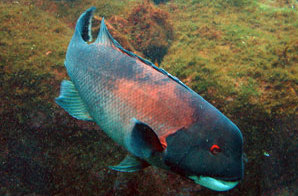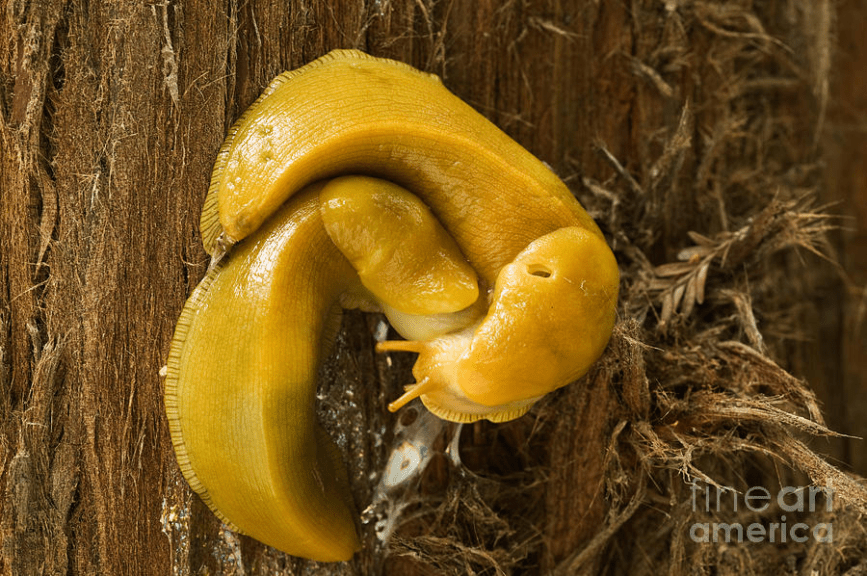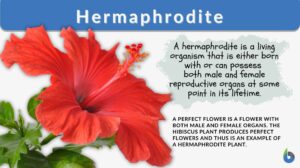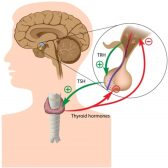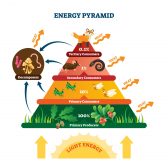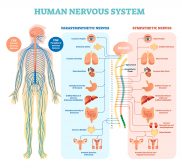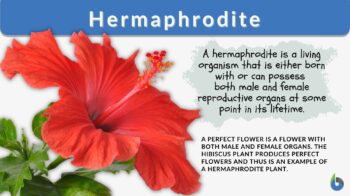
Hermaphrodite
n., plural: hermaphrodites
[hɝˈmæfɹədaɪt]
Definition: an organism (plant or animal) having both male and female reproductive organs
Table of Contents
We all know that typically living organisms are divided into two main categories of sex-based on their biological structure. These subgroups are either male or female and living things usually belong to one or the other. However, sometimes, organisms end up becoming a bit of both. These living organisms are classified as being a hermaphrodite.
Hermaphrodite Definition
What is a hermaphrodite? How does one define hermaphrodite and what is the hermaphrodite meaning or how do we know what hermaphrodite means? A living organism is considered a hermaphrodite when it possesses both of the male and the female reproductive organs whether it occurs naturally or abnormally. A pseudohermaphrodite refers to an organism whose external genitalia is physically unable to be deciphered as male or female but has the presence of either ovaries or testes internally. There are hermaphrodite plants, hermaphrodite animals, and hermaphroditism in humans. Hermaphrodite statistics show that there are many plants and animals that fall under this category. On the other hand, this condition is very rare in humans and most people are not hermaphroditic.
A lot of animal groups, especially in invertebrates do not have animals of two separate sexes and hermaphrodism is normality within these organisms. These groups either mate together and either partner can act as one sex or they take turns being both. On the other hand, some of these organisms will perform something called self-fertilization. The organism will produce both eggs and sperm and then fertilize itself within its own body, creating its own offspring without the need of another organism. This can occur in pulmonates, slugs, and tunicates as well as numerous other invertebrates. Though less likely, there is still the presence of hermaphrodites in vertebrates and most commonly in fish. However, most vertebrate animals are gonochoric, which means they have separate male and female organisms who individually produce the male and female sexual gametes.
The majority of plants are actually hermaphrodites, where a single plant will contain a flower that is male and consists of the male reproductive organs and a flower that is female and contains the female reproductive organs. In some special species, there is what is termed mixed-breeding. These species contain all three within the population: males, females, and hermaphrodites. This is relatively common in plants where a single plant will possess male, female and hermaphroditic flowers all on one organism. In Figure 1 below we see the papaya plant which can contain all three kinds of flowers.
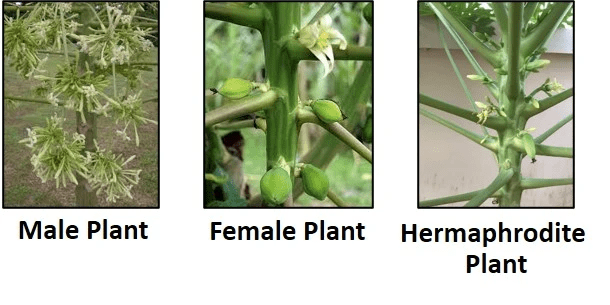
This phenomenon often raises a lot of questions and peaks the curiosity of many as it is often labeled as a strange occurrence. This is especially so when the term is referred to within the human species. Some of these questions are as follows:
- Are there any human hermaphrodites? Yes, though rare, there are a few humans who are born with intersex chromosomes and/or intersex genitalia.
- Can a hermaphrodite have a baby? In true hermaphrodites, there have been at least 11 pregnancies recorded. So hermaphroditic girls can have babies.
- How many genders are there scientifically? Is hermaphrodite a gender? There are scientifically two genders, both male and female. So no, a hermaphrodite is not a separate gender. A hermaphrodite is both male and female, they are both genders and sexes.
- Can a hermaphrodite have both working parts? Indeed, true hermaphroditism allows the full function of the reproductive organisms. In some animals and plants, it is the intention to be able to produce both the sex gametes in a single organism.
- Is hermaphrodite offensive? As mentioned previously, there are many plants and animals that are hermaphrodites. A hermaphrodite human or hermaphrodite person does exist as well. However, the term is used to refer to humans is not categorically correct. Humans who possess both male and female reproductive organs preferred to be referred to as “intersex person”.
A hermaphrodite is an organism (plant or animal) having both male and female reproductive organs. A plant hermaphrodite, for example, has both staminate and carpellate organs. In animals such as some pulmonate and opisthobranch snails and slugs can act as either the male or female in sexual reproduction. In humans, the term is used to describe an individual possessing both male and female organs. However, the more proper term for such condition in humans is “intersex person”. A hermaphrodite refers to one that has both male and female gonads that are functional. Thus, that individual is capable of producing male and female gametes at least at one point in their lifetime. Etymology: comes from the name of the minor Greek god Hermaphroditus, son of Hermes and Aphrodite.
Zoology
Hermaphrodite ‘sex” and hermaphrodite anatomy is nothing strange within the animal kingdom. There are even different types of hermaphrodite animals in zoology.
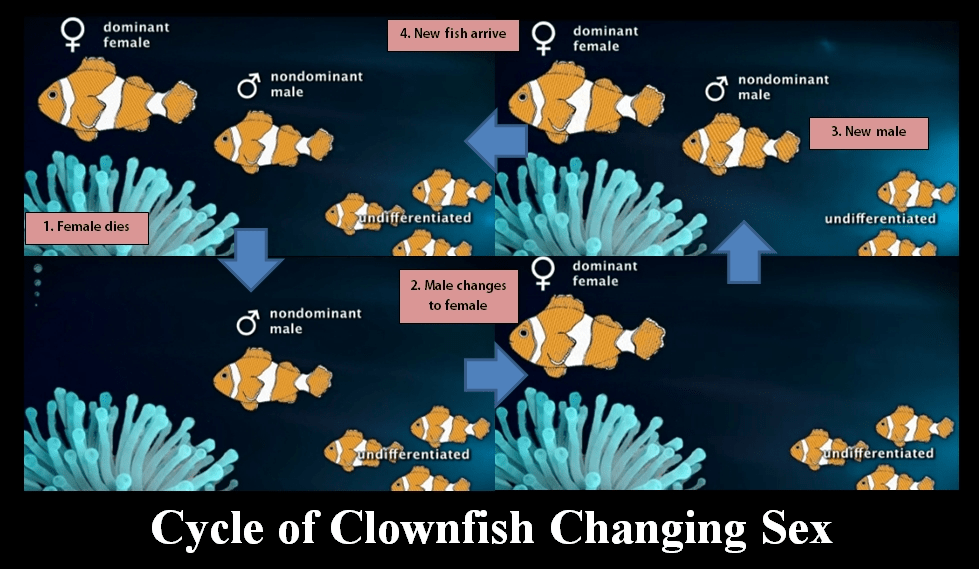
Sequential hermaphrodites
These unique animals are typically born as one sex and later transform into the other for some biological reason. Though this occurrence does not exactly make the organism a real hermaphrodite – possessing both sexes at once – they are still considered hermaphrodites since they are not only one sex throughout their lifetime. This dynamic change can only happen once in the animal’s life cycle and is common in flowering plants but also in gastropods and fish. There are three (3) different types of sequential hermaphrodites:
- Protandry – the first kind of sequential hermaphrodite starts off as a male and then eventually changes into a female. This is well-known to occur in clownfish that live with sea anemones in a symbiotic relationship. Typically, there is a specific anemone that contains multiple male fish that are non-reproductive as well as one reproductive male and one reproductive female. Fishermen tend to prefer larger fish, and since the female fish is the biggest of all the clownfish, often, they get caught by fishermen and removed from their school of fish. When this occurs, the reproductive male changes sex so that the school is able to have a female again. One of the bigger non-reproductive males will then become reproductive so the lifecycle of the fish can continue. We see the cycle of the clownfish in Figure 2 above.
- Protogyny – this is the opposite of protandry. Here, the organism starts off as a female and then changes to a male. We see this again in fish, this time, wrasses fish that live in reefs. This species is unique as their males are categorized into two major groups. There are terminal phase males, who possess distinctly bright patterns and colors and protect the general school of fish. There are also initial phase males who look similar to the females, are much smaller and do not look like the terminal males, and typically associate with the female wrasses fish. When the terminal phase males begin to abandon the school of fish or get old and die out, some of the dominant females or initial phase males will become terminal phase males in order to help the group and replace the terminal males lost.

Figure 3: California Sheephead in its reef habitat. Photo Credit: California state government. - Bidirectional sex changes – these “true hermaphrodites” possess the reproductive organs of both the male and female organisms. They behave like either the male organism or the female organism depending on the stage of life they are at. This is seen in the coral reef fish, Lythrypnus dalli. Often we do not think of organisms having social status or position, but these fish change sex based on that. If the fish are dominant, they will change to male fish, however, if the fish begins to act like a subordinate fish, it will switch over to being a female fish. The Lythrypnus dalli is pictured below in Figure 4.
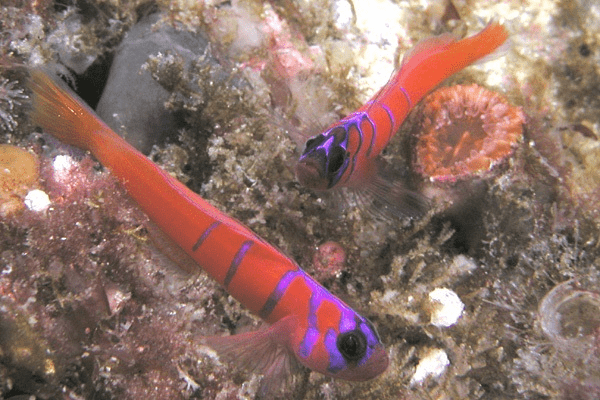
Simultaneous hermaphrodites
As blatantly said in the name, these organisms have both male and female reproductive organisms at the same time as an adult. They can produce both the female and male sex gametes and can even self-fertilize and produce their offspring on their own (without the assistance of another organism). Simultaneous hermaphrodite examples include:
- Banana slugs – this gastropod prefers to mate with a partner but can self-fertilize if a partner is not available. It is quite an important characteristic of the banana slug to be a hermaphrodite because of how they mate at times. During the mating process, banana slugs get stuck together (Figure 5) and because their male reproductive organs are so large, the organ will get bitten off in order to separate the organs. This does not harm the slug and because it still possesses its female reproductive organ, it can continue to mate with other slugs.

Figure 5. Banana slugs stuck together while mating. Image Credit: Inga Spence. - Hamlets – these fish do not practice self-fertilization but rather prefer to find a mate. The fish, while mating, will each get a chance to be male and female, leaving both fish fertilized at the end of the encounter. Since this is the way it occurs, it can take up to a few days for the entire process to be completed. This has been easily observed by scientists as the fish are very nonchalant, unlike other animals, when being researched.

Figure 6: Golden hamlet (Hypoplectrus gummigutta). Photo credit: Kosmas Hench. - Mangrove killifish – These fish are known for being the only vertebrates who reproduce using self-fertilization and regularly self-fertilize when they produce their own eggs and sperm through meiosis. These native North, Central, and South American fish are all hermaphrodites and fertilize themselves when their internal organs unite the egg and sperm within its body.

Figure 7: Mangrove killifish. Photo Credit: National Marine Fisheries Service. - Earthworms – these are a little more unique as they have a mechanism that prevents self-fertilization despite the worms having both ovaries and testes simultaneously. The worms must come into contact with and mate with another worm in order for sexual reproduction to occur in the species and produce offspring.
Pseudohermaphroditism
These are animals who appear to be hermaphrodites at first but after careful research, observation and studying, they were ruled out as such. A prime example of this occurs in the hyenas who were all – whether male or female – believed to have a penis from birth. After further observation and research, the phallic organ that was believed to be a penis turned out to be a very large and long clitoris. This still can be mistaken for a penis generally in the hyenas and it is often difficult to tell the males and females apart unless they have reached sexual maturity, that is, the female becomes pregnant.
Botany
As previously mentioned, plant hermaphrodites are quite common in the world. Plant hermaphrodites occur when the flower of a plant possesses both the male and the female. reproductive parts.
Monoecy
Monoecious plants are those that have both male and female flowers on the same plant. The single flower itself is not hermaphroditic as it is only an organ or part of the organism. They are considered to hermaphrodite plants because they produce male and female gametes on the same, single organism. Some plants are sequential hermaphrodites as mentioned above as they change their sex sometime during their life cycle. Most conifers are hermaphrodites and also a small percentage of angiosperms are also hermaphrodites. A very common monoecious plant is corn or maize. Each corn plant has two types of flowers, one male type and one female type developing at different areas in the plant. The male flower usually develops towards the top of the plant so that when it sheds its pollen, it will fall into the female part of the plant below. Since the male flower has no pistils, it cannot fertilize itself and must assist the female flower with fertilization. The same goes for the female flower, which only contains pistils and no stamen, so it must depend on the male flowers to fertilize it in order to become fertilized and produce corn. This can be easily viewed in Figure 8 below.
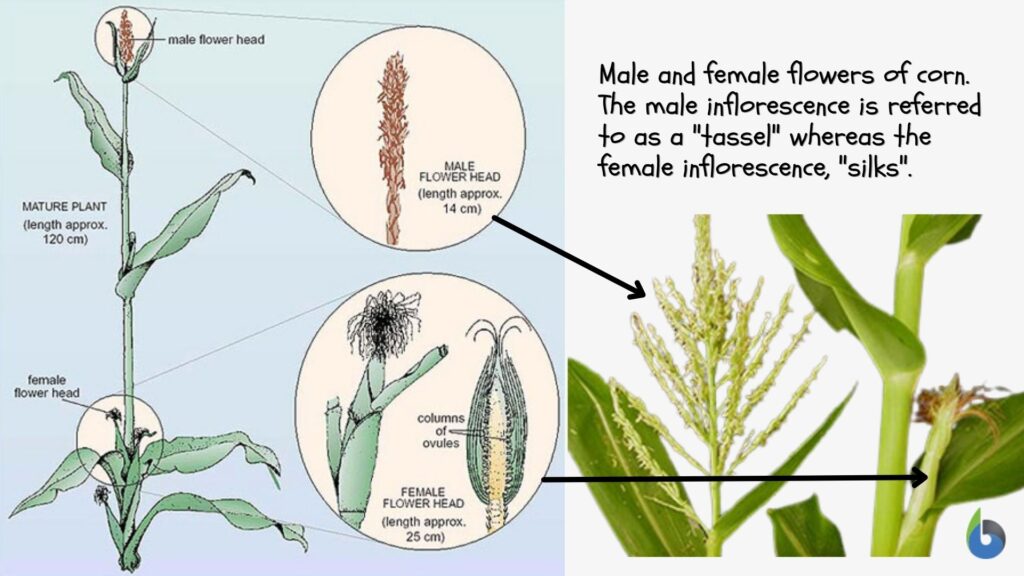
Andromonecy
This type of hermaphrodite plant exists in over 4000 kinds of plants. It occurs when the plants produce flowers that contain both male and female parts, but the female parts are sterile and cannot be fertilized. These are considered to be andromonoecious species and the flower is described as “perfect” (as opposed to an imperfect flower).
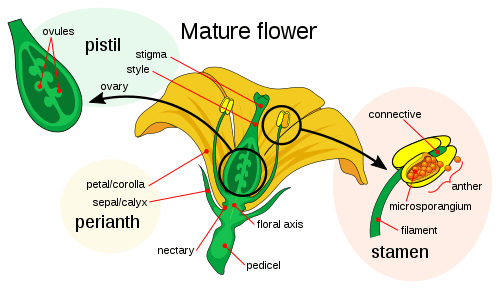
Use Regarding Humans
Previously, the term hermaphrodite was used for humans when their sexual orientation was not clear. It dates all the way back to the 17th century where the law stated that a person was either male, female or hermaphrodite, which meant both male and female.
From that time, persons could be termed pseudohermaphrodites, if their internal reproductive system differed from their external genitalia, or true hermaphrodites if they contained the reproductive organs of both male and female humans. As mentioned earlier, the proper term for human hermaphrodites is an intersex person.
These people often have a combination of both male and female gametes or organs that can be as a result of their chromosomes being both XX (female) and XY (male) or some other phenomenon. It can also be caused by the sex hormones having unusual behavior in some cases. There are four (4) different types of hermaphrodism in humans include:
- 46, XX hermaphroditism – This occurs when a person is born with female reproductive organs, the XX chromosome but their genitalia seems to be and looks like that of a male (penis). The labia of the vagina end up fused together and the clitoris seems amplified, hence resembling the look of a penis. Excessive exposure of male hormones to the female fetus in the womb may be the typical cause of this condition. Despite this, the internal, female reproductive organs are fine.
- 46, XY hermaphroditism – This type of hermaphroditism is caused by the imbalance of female and male hormones in the fetus. It occurs when a person is born with male reproductive organs, the XY chromosome but their genitalia seems to be and looks like that of a female (vagina). Sometimes, the internal reproductive organs may not exist at all or they might be abnormal in certain cases. Some doctors attribute this condition to the disability of difficulty with the testes producing hormones.
- True gonadal hermaphroditism – It is still not certain how this type of hermaphroditism comes about and some link it to agricultural pesticide exposure. Humans born as true gonadal hermaphrodites are born with both male and female sexual issues, either containing one of each gonad or gonads containing both ovarian and testicular tissue. These individuals are born sometimes with a combination of both the XY and XX chromosomes or with just one of them.
- Complex hermaphroditism – These persons may only have a single chromatid or three instead of two chromatids, creating this disorder. This results in the sex chromosome being XO, XXY, or XXX. Usually, however, the person does not show any blatant issues externally or internally with their sexual reproductive organs and parts. Rather, they experience hormonal imbalance or incomplete sexual development.
Nowadays, a human can typically be diagnosed as intersex within the womb or at birth. The parents of the baby can choose to leave their child as intersexed (allowing them to choose sex later in life if they so desire) or can choose the biological sex of the child. It is often much easier to reconstruct the female genitalia of a human than the male, so often the choice is made for the child to be female. If the person decides later in life that they would have preferred the other sex, they can always opt for sex-change surgery and hormone therapy in order to have the gender they prefer to be.
Evolution
Evolution has been the cause of many things including the existence of hermaphroditism which appears to stem from anisogamy or even possibly gonochorism. Though much research has gone into the tracing and discovery of hermaphrodites, most scientists and researchers still find it difficult to pinpoint where exactly they derived from.
In animals
The self-fertilizing hermaphroditic animals possibly came from gonochoric ancestry and are now seen in nematode species. It is believed that animals evolved into simultaneous and other hermaphrodites because potential mating partners became restricted in number.
In plants
Though self-fertilization began in flowering plants to encourage population growth, many plants have evolved back into sequential hermaphrodites, preferring to become fertilized by others and promote pollination. This will mainly be pollination through vectors such as birds and insects. A lot of the original vascular plants, however, were acknowledged as being a type of hermaphrodite called outcrossing hermaphrodites.
Try to answer the quiz below to check what you have learned so far about hermaphrodites.
References
- Barrows, E. M. (2001). Animal behavior desk reference: A dictionary of animal behavior, ecology, and evolution. Boca Raton, Fla. : CRC Press. http://archive.org/details/animalbehaviorde00barr_955
- Comparative reproductive biology of Ariolimax californicus and A. dolichophallus (Gastropoda; Stylommiatophora) | Semantic Scholar. (n.d.). Retrieved December 11, 2021, from https://www.semanticscholar.org/paper/Comparative-reproductive-biology-of-Ariolimax-and-Leonard-Pearse/cb2aac6631424e24fd0d815b384840fc42cd6b35
- Evolution: Plant Breeding Systems. (n.d.). Retrieved December 11, 2021, from https://web.archive.org/web/20091022174814/http://geocities.com/we_evolve/Plants/breeding_sys.html
- Hermaphroditism | Definition, Types, & Effects | Britannica. (n.d.). Retrieved December 11, 2021, from https://www.britannica.com/science/hermaphroditism
- Hermaphroditism (Intersex). (2016, July 21). News-Medical.Net. https://www.news-medical.net/health/Hermaphroditism-(Intersex).aspx
- Kanamori, A., Yamamura, A., Koshiba, S., Lee, J.-S., Orlando, E., & Hori, H. (2006). Methyltestosterone efficiently induces male development in the self‐fertilizing hermaphrodite fish, Kryptolebias marmoratus. Genesis. https://doi.org/10.1002/DVG.20240
- Pandian, T. J. (2011). Sex Determination in Fish. CRC Press.
- Schultz, B. A. H., Roberts, S., Rodgers, A., & Ataya, K. (2009). Pregnancy in true hermaphrodites and all male offspring to date. Obstetrics and Gynecology, 113(2 Pt 2), 534–536. https://doi.org/10.1097/AOG.0b013e3181866456
- Vilain, E., Achermann, J. C., Eugster, E. A., Harley, V. R., Morel, Y., Wilson, J. D., & Hiort, O. (2007). We used to call them hermaphrodites. Genetics in Medicine, 9(2), 65–66. https://doi.org/10.1097/GIM.0b013e31802cffcf
©BiologyOnline.com. Content provided and moderated by Biology Online Editors.
